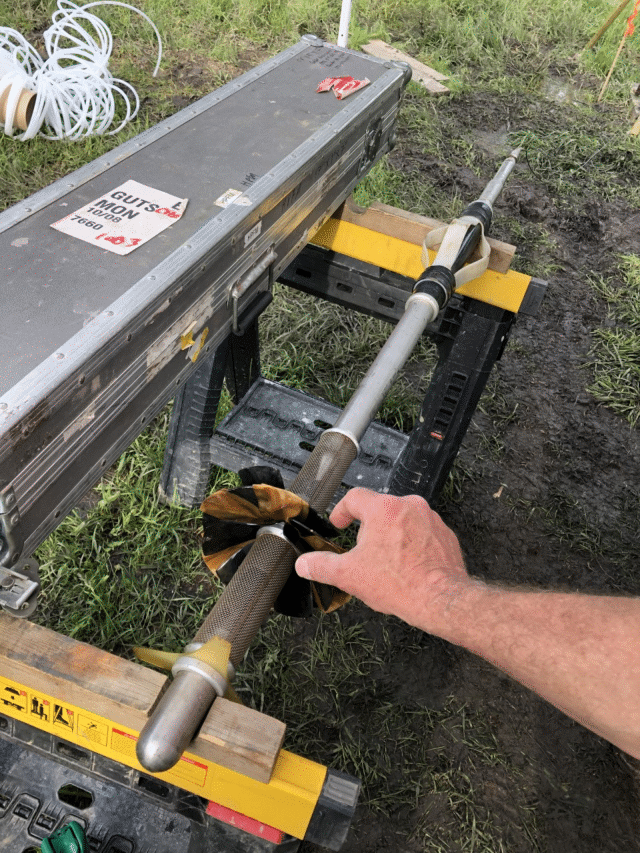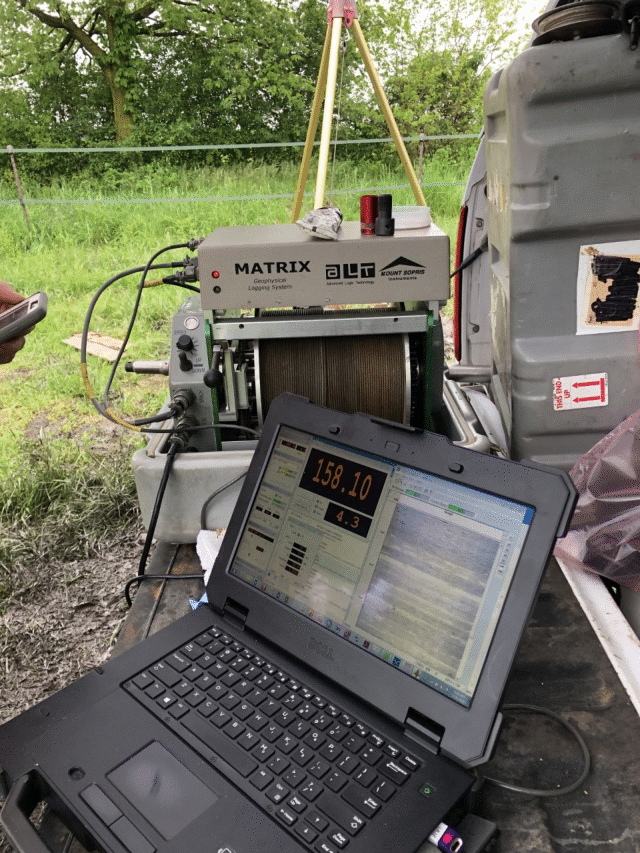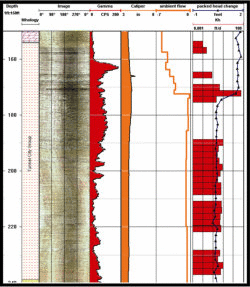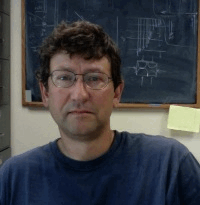Advances in Borehole Flow Meters:
for Determining Water Yielding Fractures and
Ground Water Flow in Bedrock
Understanding ground water flow in fractured rock is among the most challenging tasks in our profession.
Borehole flow meters are taking the mystery out of ground water movement in complex bedrock formations. By measuring the vertical movement of ground water in boreholes, we can measure both the direction and velocity of vertical flow along well bores, and these flows relate directly to aquifer parameters such as transmissivity, hydraulic conductivity, vertical head profiles, and the presence of fractures or permeable features along boreholes.
Quantitative interpretation of borehole flow data can provide estimates of hydraulic parameters and be directly related to bedrock hydrostratigraphy.
Advances in Technology are Achieving More Than Ever Before
 The combination of borehole flow meters are being applied in new ways to achieve more. Standardization of processes allow reproducibility and easier troubleshooting in the field. Emerging technologies are able to achieve high accuracy and high resolution of discrete ground water movement per individual fracture, in a record short time period.
The combination of borehole flow meters are being applied in new ways to achieve more. Standardization of processes allow reproducibility and easier troubleshooting in the field. Emerging technologies are able to achieve high accuracy and high resolution of discrete ground water movement per individual fracture, in a record short time period.
Tool technologies are able to measure extremely low flow rates and capture the signature of ground water movement where old application may have missed it. Plus, when using the higher resolution imaging tools, these downhole tools are more robust, easier to use, and becoming more common as a standard process in most bedrock hydrogeologic investigations.
Master the Basics, then Apply
 Learn how to make basic observations and field judgements to validate or refine your Conceptual Site Model. Learn how to use flow meters to check the ground water flow regime in the borehole that is being impacted by contrasting hydraulic conductivities, and specifically where low-permeability units are present, and how aquitards may or may not be effective vertical hydraulic barriers.
Learn how to make basic observations and field judgements to validate or refine your Conceptual Site Model. Learn how to use flow meters to check the ground water flow regime in the borehole that is being impacted by contrasting hydraulic conductivities, and specifically where low-permeability units are present, and how aquitards may or may not be effective vertical hydraulic barriers.
Participants will learn the basic theory of operation, pros and cons of various systems, and appropriate application for flowmeter testing. The webinar will address tool calibration and appropriate field procedures for obtaining reliable data.
Key Webinar Highlights:
- Principles of borehole flowmeter testing
- The spinner flowmeter - new advances in technologies and techniques
- Threshold velocities
- Logging speeds
- Problems and pitfalls
- typical data
- data processing and interpretation
- The heat-pulse flowmeter - emerging appliations
- Appropriate flow velocities
- Theory of operation
- Determining flow direction
- Typical data pulses
- Problems and pitfalls
- Too little flow
- Too much flow
- Data processing and interpretation
Key Webinar Benefits:
- Learn how to interpret a flow meter log
- Practice calculating vertical flows and gradients across an aquitard
- Learn common mistakes and how to avoid them

"The Webinar on borehole flow meter techniques has been an excellent summary and assessment of the different techniques as well as valuable pointers from experienced speakers. A definite must before any work related to borehole flow meters begins! Many thanks."
- Janka Nitsche, PhD, School of Planning, Architecture and Civil Engineering, Queen's University, Belfast
Instructors Bio
Dave Hart PhD, PG

 |
Dave Hart Ph.D. is a hydrogeologist/geophysicist with the Wisconsin Geological and Natural History Survey and an associate professor at the University of Wisconsin-Extension. His work includes regional groundwater flow and recharge in southeastern Wisconsin, near-surface geophysics, and measurement of porosities and permeabilities in aquifers and aquitards. Prior to joining the university, he served as a hydrogeologist with Eder Associates. He is an associate editor for Ground Water and past president of the AWRA - Wisconsin Section.
|